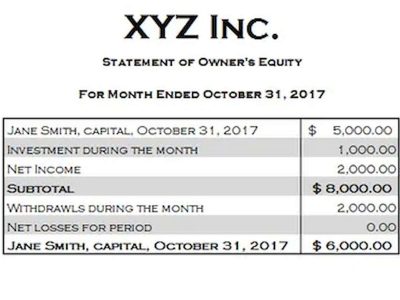
No, retained earnings are not a current asset for accounting purposes. A current asset is any asset that will provide an economic benefit for or within one year. QB makes that entry automatically as of the first day of your next fiscal year. For example, if your fiscal year-end is Dec. 31 and you run a Dec. 31 balance sheet, your net income for the year will be shown as Net income under the equity section. If you run a Jan. 1 balance sheet (one day later), the previous year’s Net income amount will now be listed under Retained earnings in the equity section.
Contents
What Factors Impact Retained Earnings?

The amount added to retained earnings is generally the after tax net income. In most cases in most jurisdictions no tax is payable on the accumulated earnings retained by a company. However, this creates a potential for tax avoidance, because the corporate tax rate is usually lower than the higher marginal rates for some individual taxpayers.
Are Retained Earnings Current Liabilities Or Assets?
The first accounting option is to make no journal entry and disclose the amount of appropriation in the notes to the financial statement. The second option is to record a journal entry that transfers part of the unappropriated retained earnings into an Appropriated Retained Earnings account. To illustrate, assume that on March 3, Clay Corporation’s board of directors appropriates $12,000 of its retained earnings for future expansion. The company’s retained earnings account is first renamed as Unappropriated Retained Earnings.
- To remove this tax benefit, some jurisdictions impose an “undistributed profits tax” on retained earnings of private companies, usually at the highest individual marginal tax rate.
- The figure is calculated at the end of each accounting period (monthly/quarterly/annually).
- Also, a company that is not using its retained earnings effectively is more likely to take on additional debt or issue new equity shares to finance growth.
- Depreciation expense would have been $1,000 higher if the correct depreciation had been recorded.
Let Skynova Help You Manage Your Small Business Bookkeeping
The company posts a $10,000 debit to cash (an asset account) and a $10,000 credit to bonds payable (a liability account). Regularly assess your retained earnings in the context of your business objectives and shareholder needs, perhaps with the help of financial advisors. The dividend preferences of shareholders can influence retained earnings, especially in dividend-focused industries. Businesses take on expenses to generate more revenue, and net income is the difference is retained earnings a liability or equity between revenue (inflow) and expenses (outflow).

On a company’s balance sheet, retained earnings are put under the equity section. Since retained earnings can be used to buy assets, people sometimes wonder if retained earnings are an asset. Your accounting software will handle this calculation for you when it generates your company’s balance sheet, statement of retained earnings and other financial statements. The normal balance in a company’s retained earnings account is a positive balance, indicating that the business has generated a credit or aggregate profit. This balance can be relatively low, even for profitable companies, since dividends are paid out of the retained earnings account. Accordingly, the normal balance isn’t an accurate measure of a company’s overall financial health.
Is Retained Earnings a Current Asset? FAQs
- However, they must deduct any dividends paid to shareholders from those amounts.
- Owner’s equity refers to the assets minus the liabilities of the company.
- That is, it’s money that’s retained or kept in the company’s accounts.
- The par value of a stock is the minimum value of each share as determined by the company at issuance.
- It usually refers to net income, or the total income minus the cost of doing business (e.g., overhead costs and payroll).
- It can go by other names, such as earned surplus, but whatever you call it, understanding retained earnings is crucial to running a successful business.
When the retained earnings balance drops below zero, this negative or debit balance is referred to as a deficit in retained earnings. While a T-shirt can remain essentially unchanged for a long period of time, a computer or smartphone requires more regular advancement to stay competitive within the market. Hence, the technology company will likely have higher retained earnings than the T-shirt manufacturer. However, for other transactions, the impact on retained earnings is the result of an indirect relationship. Revenue is the total amount of income generated by the sale of goods or services related to the company’s primary operations.
Are retained earnings an asset?

Sometimes when a company wants to reward its shareholders with a dividend without giving away any cash, it issues what’s called a stock dividend. This is just a dividend payment made in shares of a company, rather than cash. It can reinvest this money into the business for expansion, operating expenses, research and development, acquisitions, launching new products, and more.
- Retained earnings are an equity balance and as such are included within the equity section of a company’s balance sheet.
- The entry to Retained Earnings adds an additional debit to the total debits that were previously part of the closing entry for the previous year.
- When the Retained Earnings account has a debit balance, a deficit exists.
- Profit is the company’s bottom line – its total income earned from the sale of goods and services.
Since the financial statements have already been issued, they must be corrected. The correction involves changing the financial statement amounts to the amounts they would have been had no errors occurred, a process known as restatement. The correction may impact https://www.instagram.com/bookstime_inc both balance sheet and income statement accounts, requiring the company to record a transaction that corrects both. Since income statement accounts are closed at the end of every period, the journal entry will contain an entry to the Retained Earnings account.
The statement of retained earnings is also known as a statement of owner’s equity, an equity statement, or a statement of shareholders’ equity. It is prepared in accordance with generally accepted accounting principles https://www.bookstime.com/ (GAAP). Retained earnings are usually considered a type of equity as seen by their inclusion in the shareholder’s equity section of the balance sheet. Though retained earnings are not an asset, they can be used to purchase assets in order to help a company grow its business.